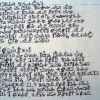Gangs with different affiliations, history, beliefs and ethnicity are using a long established type of code that does not contain recognized gang symbols. The “Tic-Tac-Toe” code system is flexible, secure, easy to learn and easy to use. For example, (Illustration #1) shows the use of a “Tic-Tac-Toe” type code. The first sample we will examine, used by the Bloods gang is shown in (Illustration #2). As we examine this document, we will look for gang identifiers and symbol patterns to help decipher the document.
The “Tic-Tac-Toe” code uses geometric designs, usually a “number sign” or “pound sign” also known as an “Octothorpe”, and an “X” shape in combination with a “dot” to create symbols to represent letters of the alphabet. The figures shown in (Illustration #1) depict a basic form of this type of code which was initially created by Freemason’s. Letters of the alphabet are placed in the open portions of these symbols and then the letters are assigned that shape. This type of code is very flexible because the users can place any letter in any symbol opening. Because of this flexibility and ease of use, a number of gangs use this type of code (or one of the many variations) to send secret messages. This code system has been in use for many decades and continues to attract new users. The challenge here is to determine which shape represents what letter of the alphabet and to determine what variation of the “Tic-Tac-Toe” code is being used.
The shape represents the letter!
If you look at (Illustration #1), the “backwards ‘L’” shape with no “dot” located in the upper left hand portion of the illustration would represent the letter “A”. The “V” shape with a dot located in the lower right hand portion of the illustration would represent the letter “W”.
The shape represents the letter!
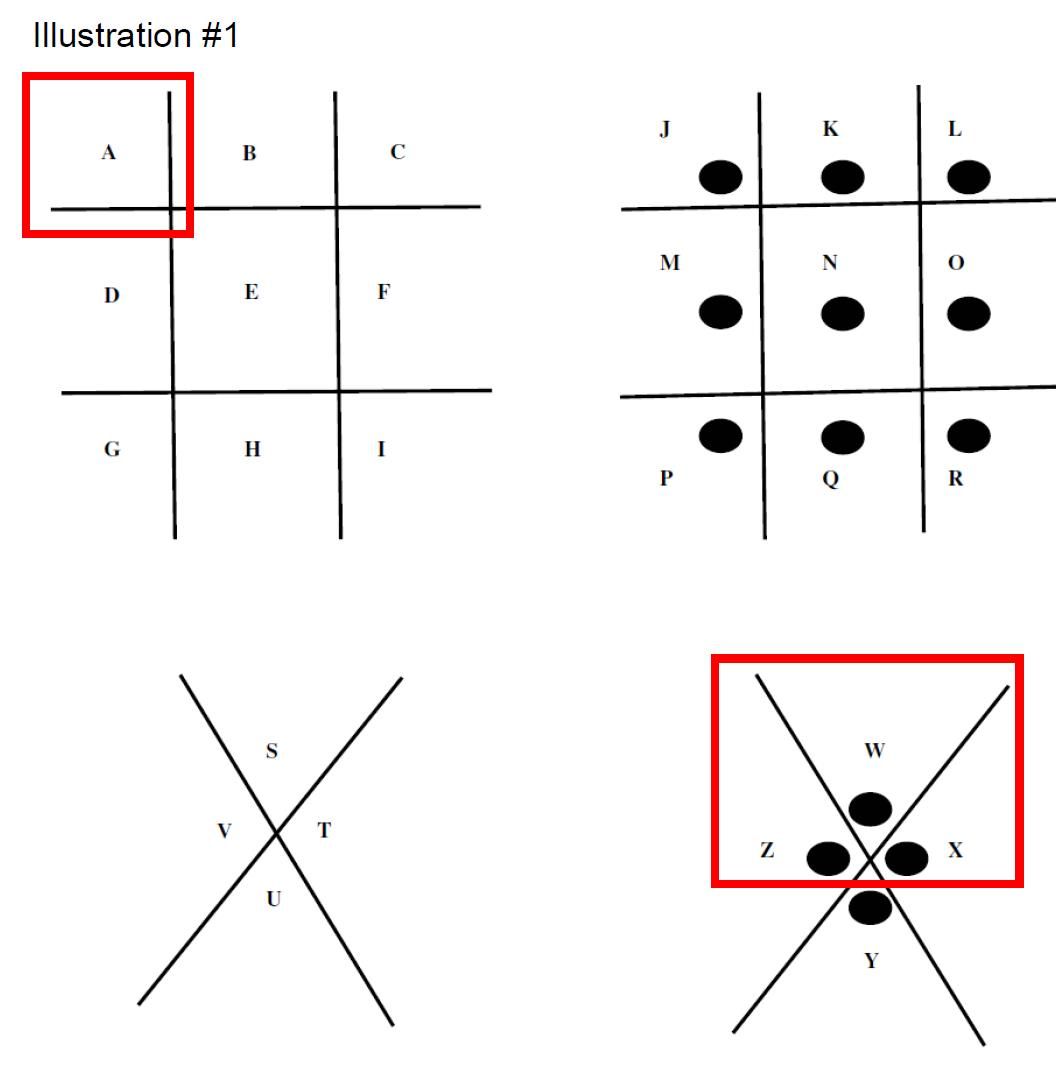
You can see in (Illustration #2) how the symbols used in the document are formed by the shapes formed by the “number sign” or the letter.
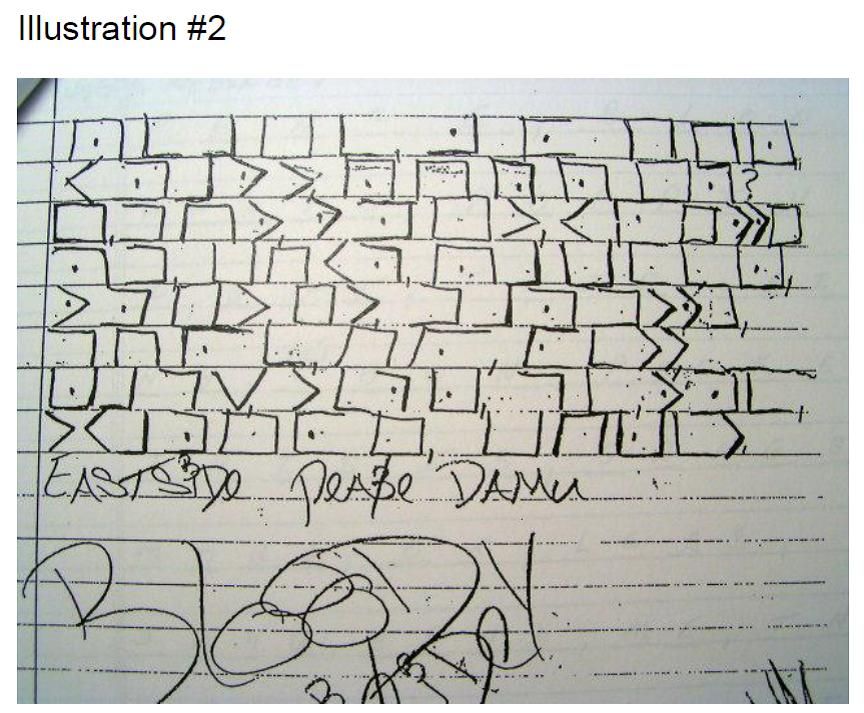
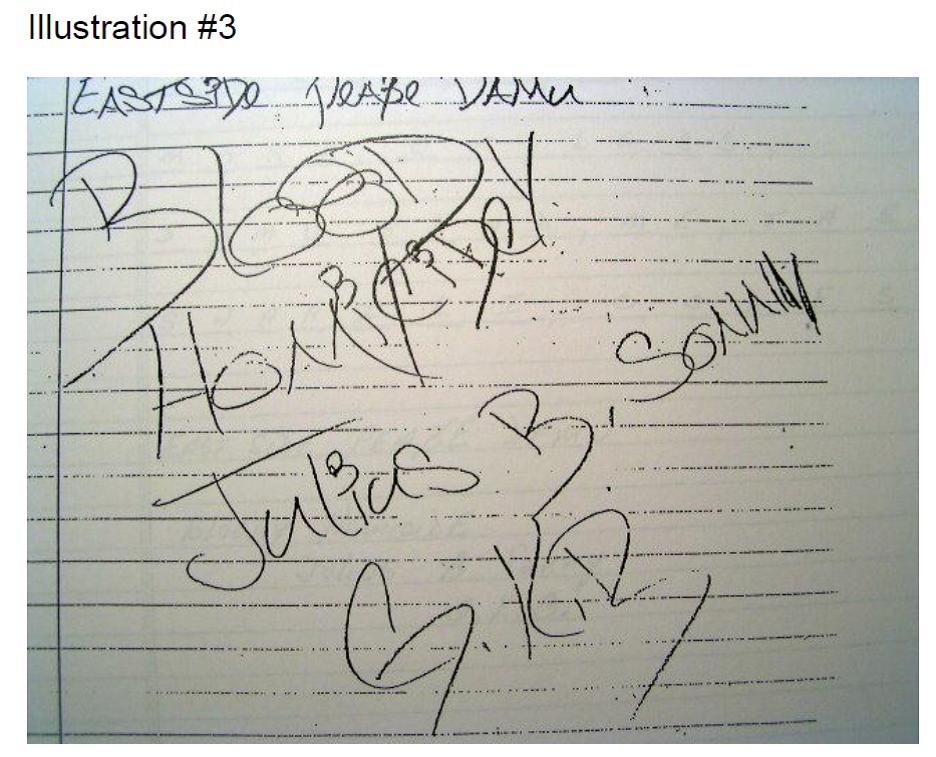
A close examination of the document shows that the writer is using Bloods gang identifiers (Illustration #2 & #3). In (Illustration #2) the writer has placed a letter “B” to dot the letter “I” and uses the Swahili word “Damu” (Blood) to identify himself as a member of the Bloods gang. In (Illustration #3), the writer again uses a “B” to dot the letter “I” and writes “Bloody Homicide”. He ends the document with “G.K.B.” which identifies his gang set which is “Gangsta Killa Bloods”.
In (Illustration #4), I noticed that the second word on the first line has double letters. Since the writer has used identifiers in this document to identify himself as a member of the Bloods gang, it is likely that the double letters are “O” and that this word is “Blood”. We have now identified four symbols of this code.
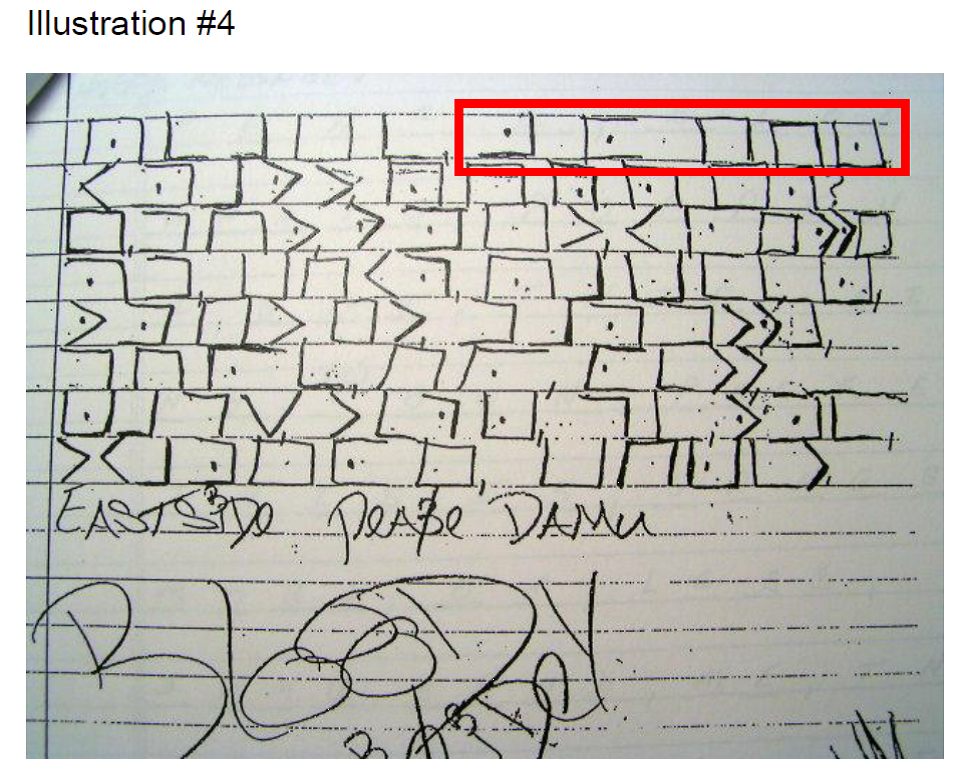
Taking a closer look at the second line (Illustration #5), you will notice that the first word ends with a “comma” and that the second word has an interesting “symbol pattern": “X_XX_ _” ( where the “X” represents the same letter), and that the second word is followed by a "?”. The Bloods gang uses phrases like “Five is poppin’ and six is droppin’” to show support of the People Nation over the Folks Nation. That interesting symbol pattern is the word: “PoPPin”.
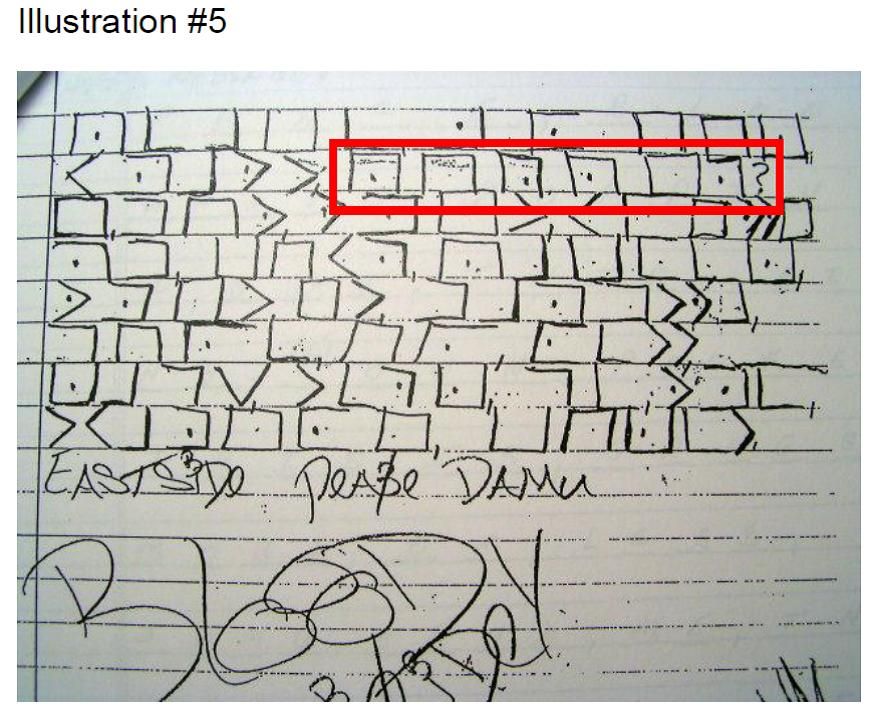
I used this information to create the symbol table shown in (Illustration #6) which identifies the geometric shape which represents a letter of the alphabet.
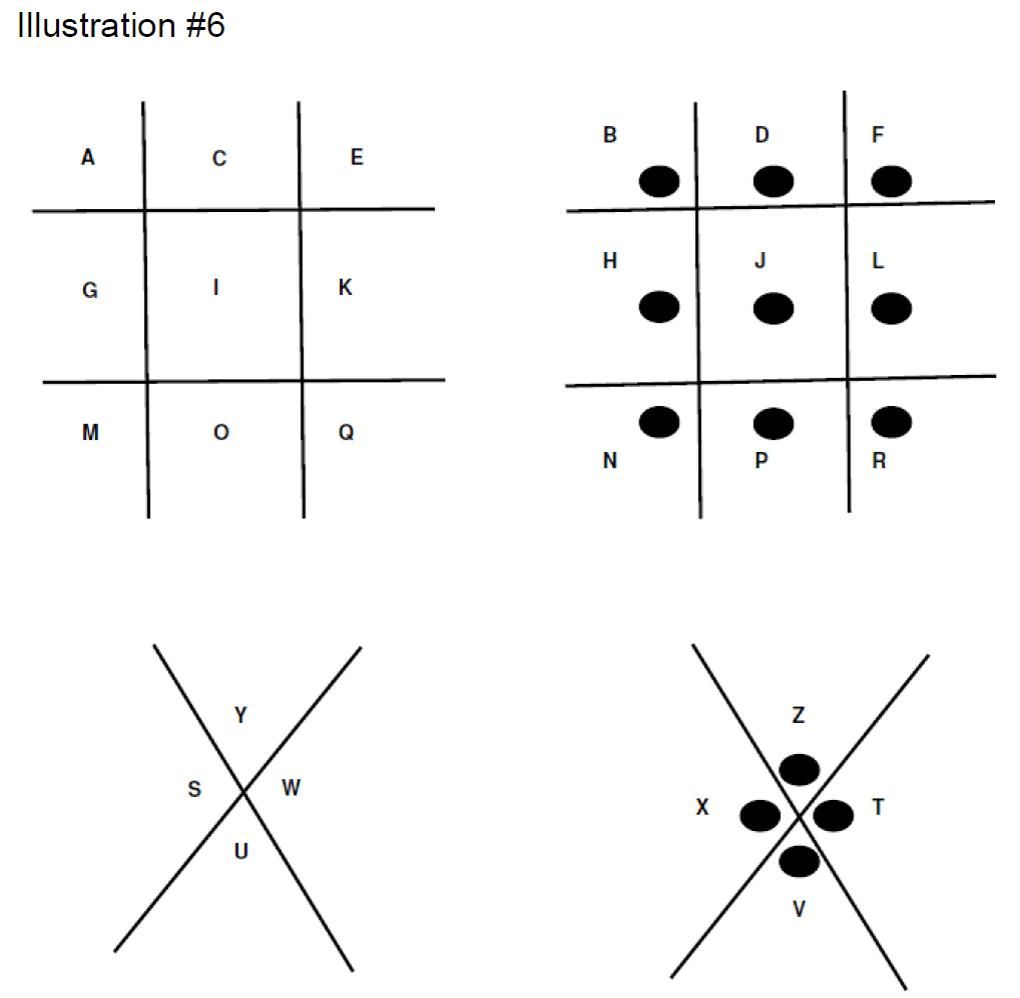
The document, when deciphered is shown in (Illustration #7 & #8).
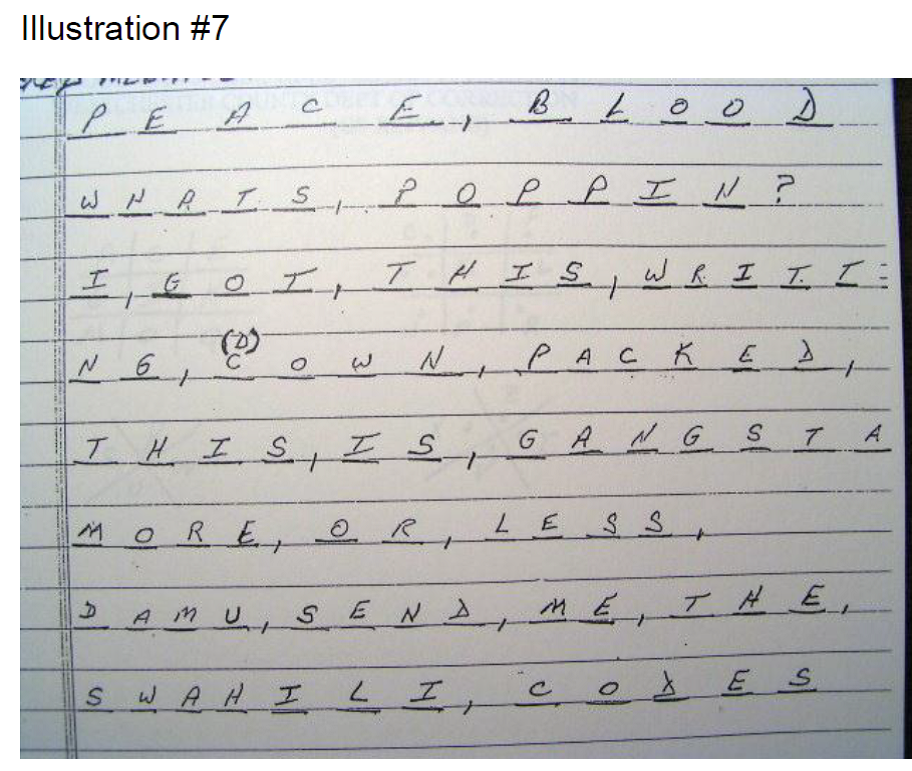
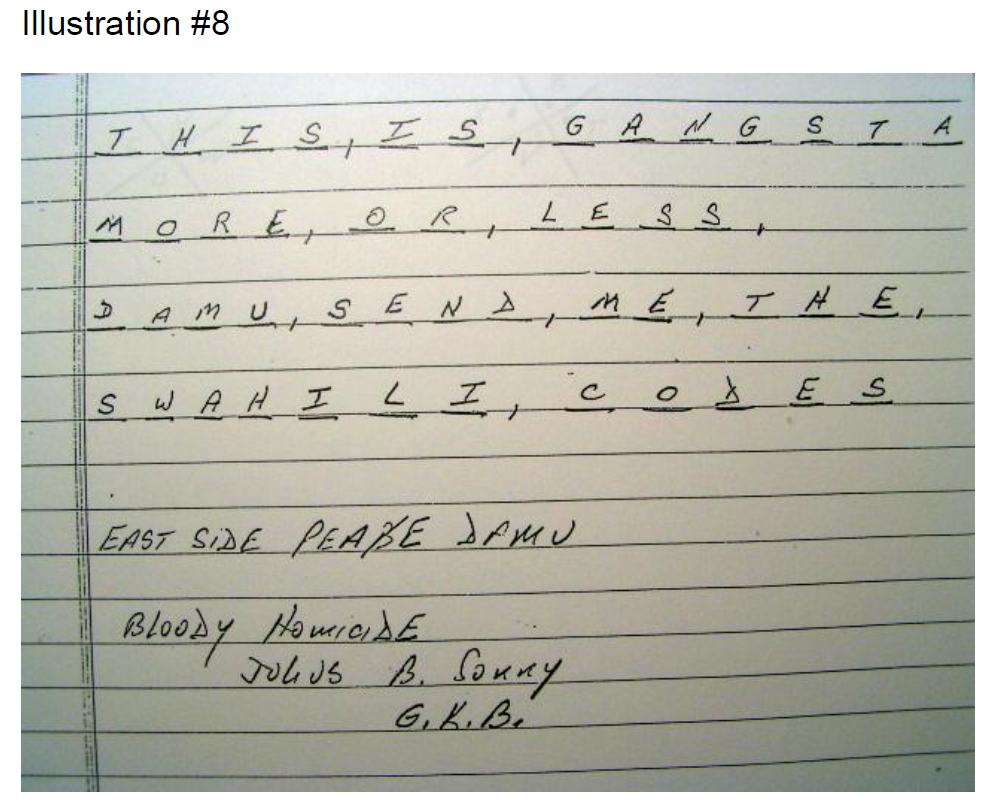
You will notice that in (Illustration #7 & #8) that the writer has misspelled the word “down” and that the writer is asking for another code (which may be of important intelligence value later) which the writer identifies as the “Swahili Code”.
There are many variations of this “Tic-Tac-Toe” type code and I have provided two examples in (Illustrations #9 & #10). In (Illustration #9) only one “pound” sign and one “X” is used and the second letter in the set would have a “dot” in that symbol. So that a “backwards ‘L’” shape without a “dot” would be the letter “A” and that same shape with a “dot” would represent the letter “B”.
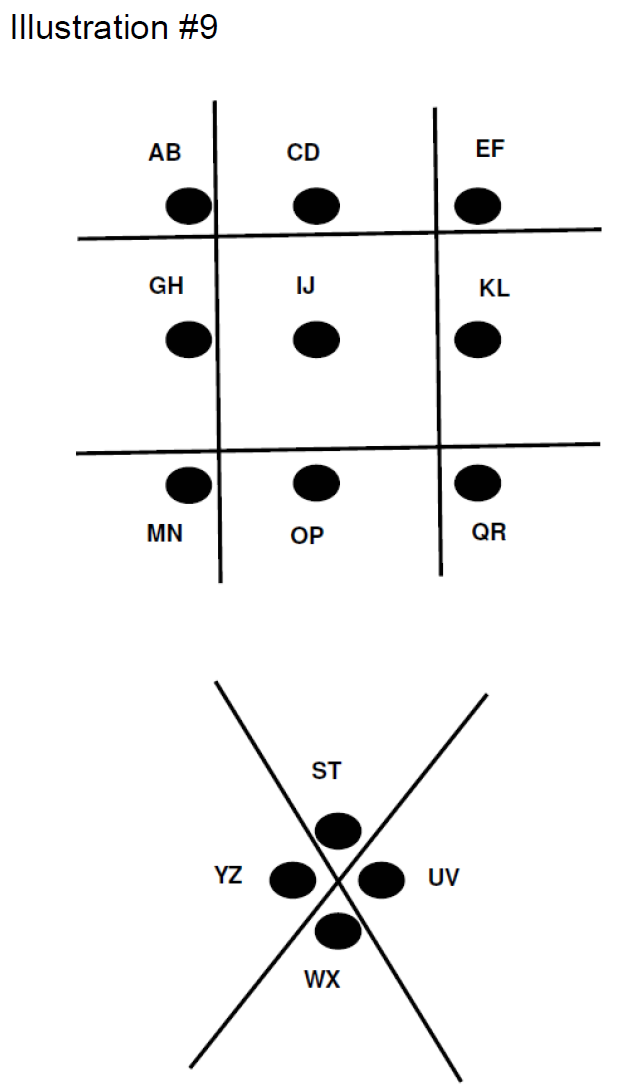
In (Illustration #10), three “pound” signs are used and no letter “X”. The writer will use a number or “hash mark” e.g. (/, //, ///) to indicate which “Octothorpe” is used to decipher the symbol. For example, a “backwards ‘L’” shape with a number “1" or a "/" would be the letter “A”. That same shape with a number “2" or "//" would be the letter “J” and that same shape with a number “3" or "///" would represent the letter “S”.
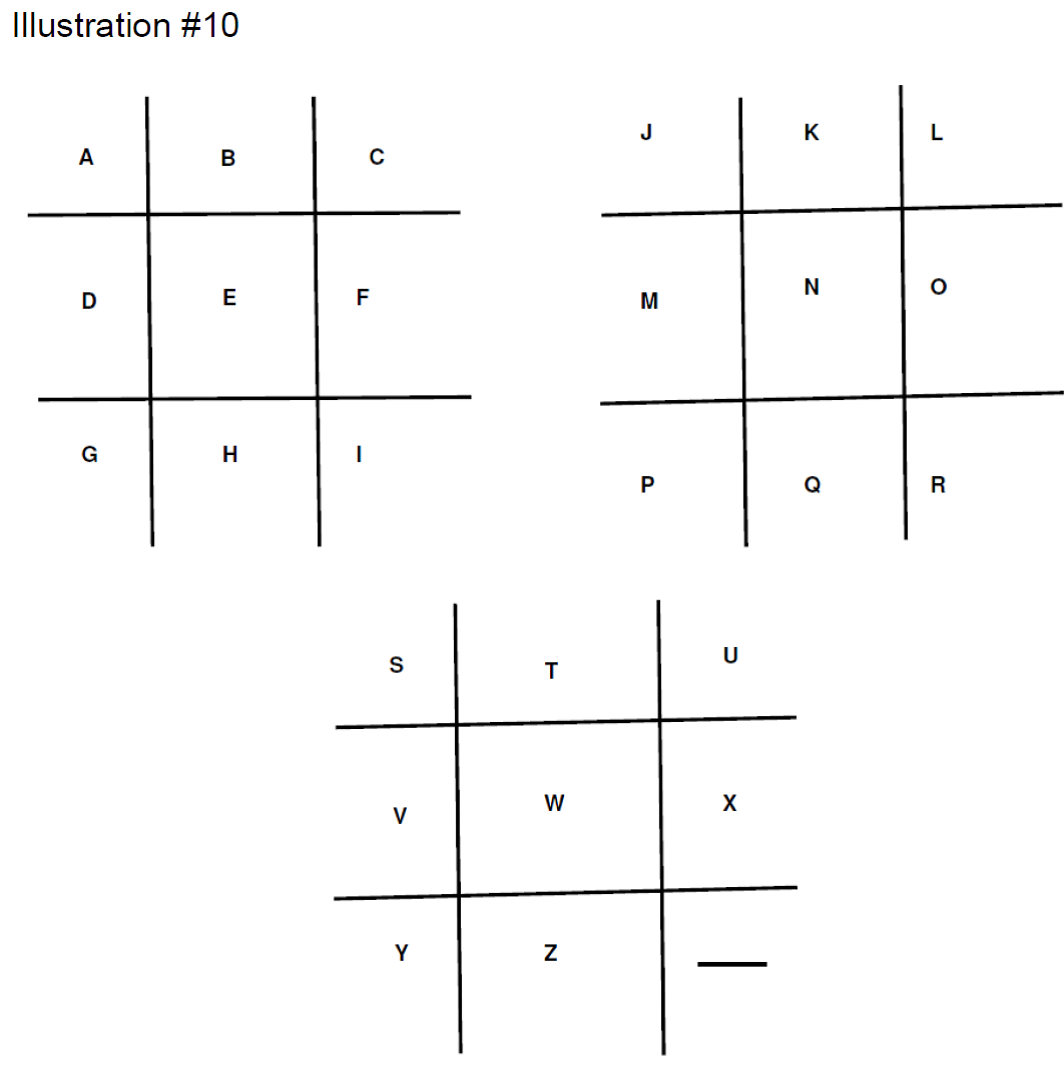
Let’s examine another “real-life” document which further demonstrates how flexible and secure this code system can be. We will also find another symbol pattern that enables us to decipher the code shown in (Illustration #11).
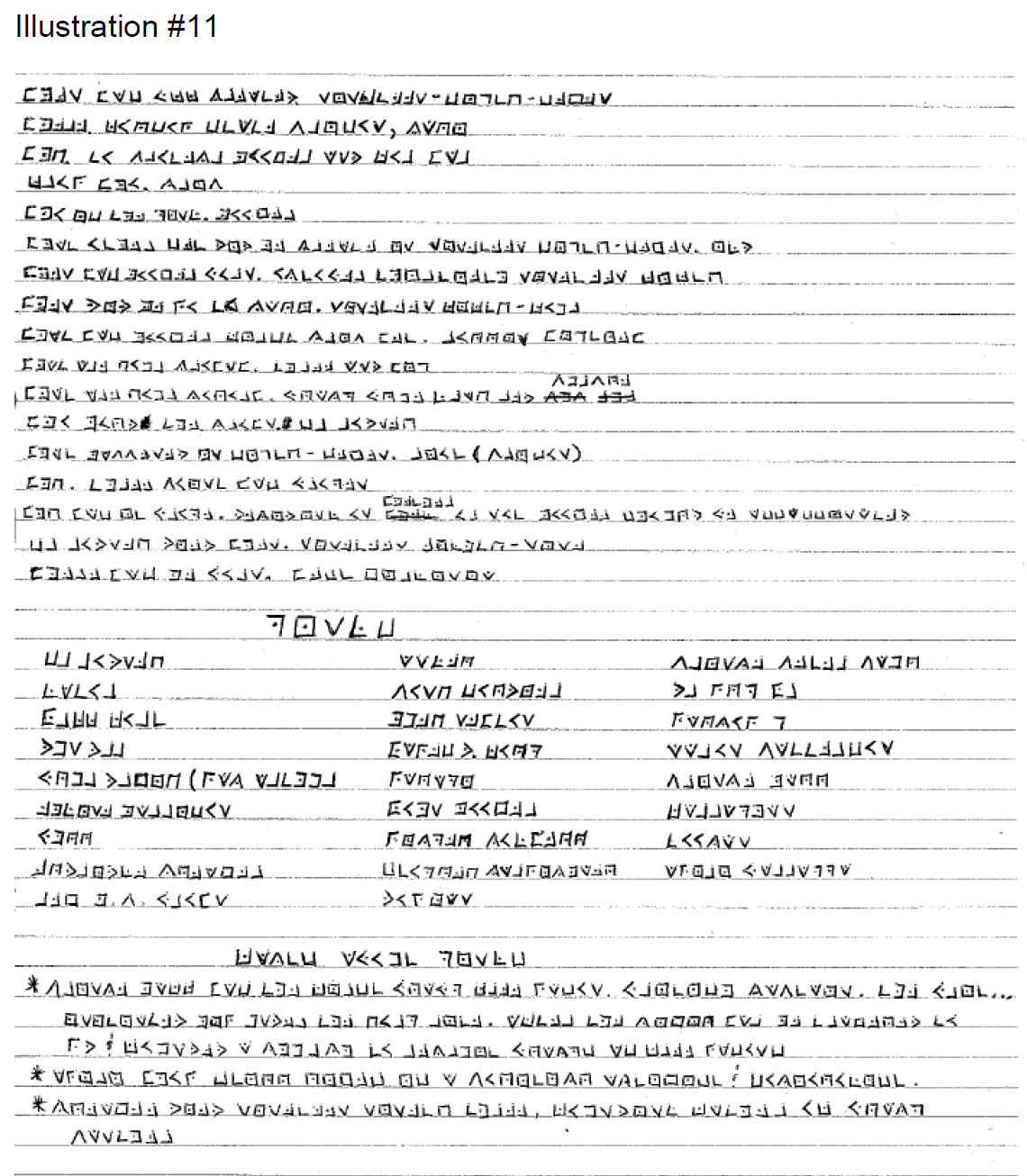
(Illustration #12) shows the symbol pattern that I found that helped me to decipher this code.
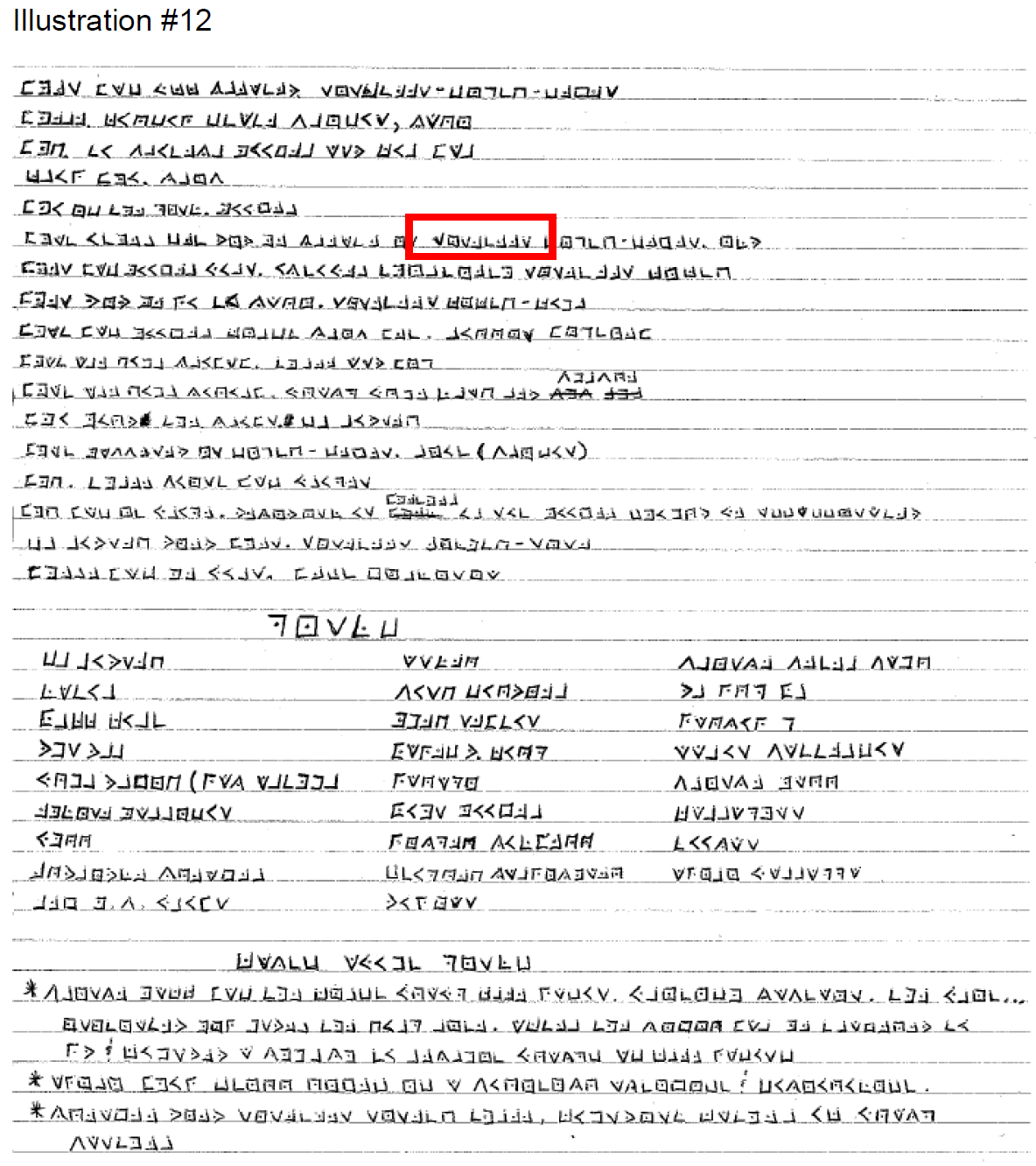
A close up view of the symbol pattern identified in (Illustration #12) is shown in (Illustration #13).
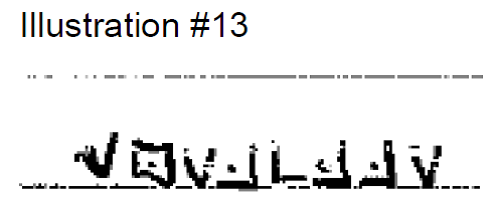
Notice that the First, Third and Last symbols are identical as shown in (Illustration #14).

Notice also that the Fourth, Sixth and Seventh symbols are identical and the Sixth and Seventh symbols are used as a double-letter in this word as shown in (Illustration #15).
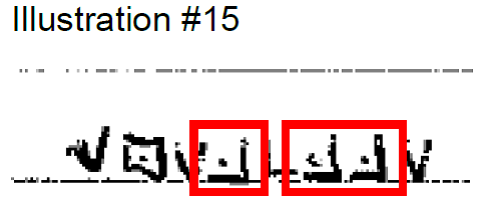
The word that matches this symbol pattern is “Nineteen”. The pattern of letters matches the code symbol pattern. (Illustration #16) matches the pattern found in (Illustration #14).
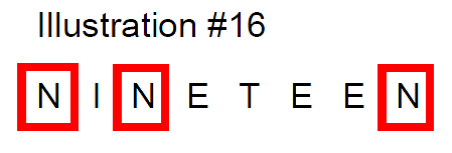
(Illustration #17) matches the pattern found in (Illustration #15).

Finding this word enabled me to decipher this code and create the template shown in (Illustration #18).
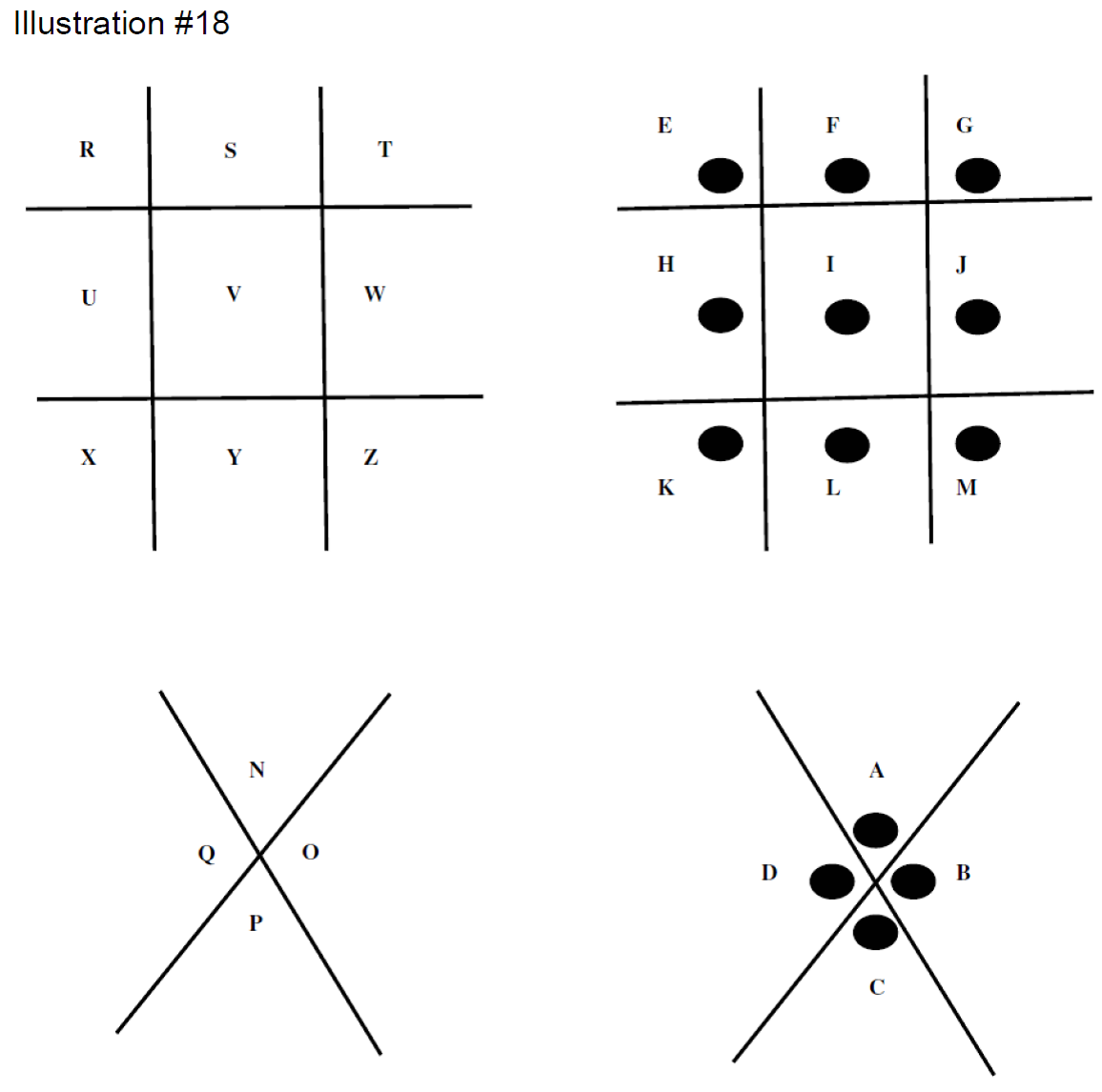
When translated and transcribed the document shown in (Illustration #11) is a page describing Folks gang history.
Modern day gangs are using this type of code for the same reason it has been used for decades. This code system is flexible, secure, easy to learn and easy to use. It is used by gangs with different affiliations, history, beliefs and ethnicity. Because of this wide use, law enforcement officers, whether federal, state or local with different types of departments such as police, corrections or probation, should be familiar with the symbols used in the Tic-Tac-Toe cipher.












